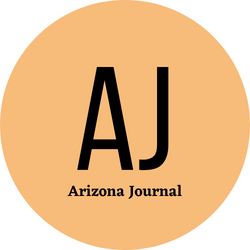Flood Damage vs Water Damage: Understanding the Categories, Mitigation Process, and Insurance Coverage
by Mayra Hills

Flood damage and water damage are two terms that are often used interchangeably. However, these two types of damages have their differences when it comes to mitigation process and insurance coverage. In the College Station Central Texas area, where heavy rainfall and storms are frequent, understanding the difference between flood damage and water damage can help homeowners make informed decisions about their property. In this article, we'll discuss the categories of flood and water damage, the process of mitigation, and insurance coverage to better equip homeowners with the knowledge they need to protect their property.
Categories of Flood and Water Damage:
Before we dive into the differences between flood damage and water damage, it’s important to understand that water damage is the overarching term. There are three categories of water damage: Category 1, Category 2, and Category 3. Category 1 water damage is the least harmful and is usually caused by a clean water source such as a broken water supply line. Category 2 water damage refers to water damage caused by contaminated water sources such as a toilet overflow. Category 3 water damage is the most severe and is caused by highly contaminated water sources such as sewage backups.
Flood damage, on the other hand, is caused by a natural disaster such as heavy rains, hurricanes, or overflowing rivers and lakes. Flood damage is characterized by the saturation of water into properties, causing damage to structures, furniture, and personal belongings. Flood damage is considered Category 3 water damage.
The process of mitigating flood damage and water damage involves different steps. In case of water damage, the first step is identifying the type of water damage category so that the property can be appropriately treated. Then, the mitigation process begins with removing all water-damaged materials and areas, using air movers and dehumidifiers to dry out the affected area, and applying disinfectants to prevent mold growth.
In the case of flood damage, the first step involves contacting a professional water damage restoration company. The mitigation process then begins with removing all standing water, drying out the property with industrial-grade drying equipment, and sanitizing the affected areas to ensure that any bacteria or germs are eliminated.
Insurance Coverage:
Homeowners insurance may not cover the damage caused by floods, but it does cover water damage resulting from other sources. If you live in an area prone to floods, it's essential to consider buying flood insurance. Flood insurance covers damages caused by natural disasters, but it's not included in most homeowners insurance policies. If you have flood insurance, the insurance adjuster will work with the homeowner and the restoration company to assess the damage and approve repairs.
In the case of water damage, homeowners insurance policies typically cover damages caused by burst pipes, appliance malfunction, or accidental flooding. Most insurance policies will pay for emergency mitigation damages, but coverage may vary. Homeowners should review their policy with their insurance agent to determine the extent of their coverage.
In conclusion, understanding the difference between flood damage and water damage is crucial for homeowners to protect their property and prepare for emergencies. When homeowners are knowledgeable about categories of damages and mitigation processes, they can make well-informed decisions for their property. Homeowners should also consider checking their insurance coverage thoroughly and consulting with their agent to ensure they have adequate coverage for flood and water damage. By being prepared and knowing the differences, homeowners can save themselves both time and money in case of an emergency.
water damage restoration college station
Water damage restoration college station
Flood damage and water damage are two terms that are often used interchangeably. However, these two types of damages have their differences when it comes to mitigation process and insurance coverage. In the College Station Central Texas area, where heavy rainfall and storms are frequent, understanding the difference between flood damage and water damage can…
Recent Posts
- Southwest Patio Elevates Outdoor Living with Exceptional Pergolas and Four Seasons Patio Covers in Phoenix, Arizona
- Expert Cleaners Lexington Shares Essential Tips for Properly Cleaning Hardwood Floors
- Exploring the Drawbacks of Duct Cleaning: Insights from Air Vent Cleaning Charlotte
- Exploring the Drawbacks of Duct Cleaning: Insights from Air Vent Cleaning Charlotte
- Clearing the Dust: Duct Cleaning Louisville KY Shares Tips to Make Your Home Less Dusty
